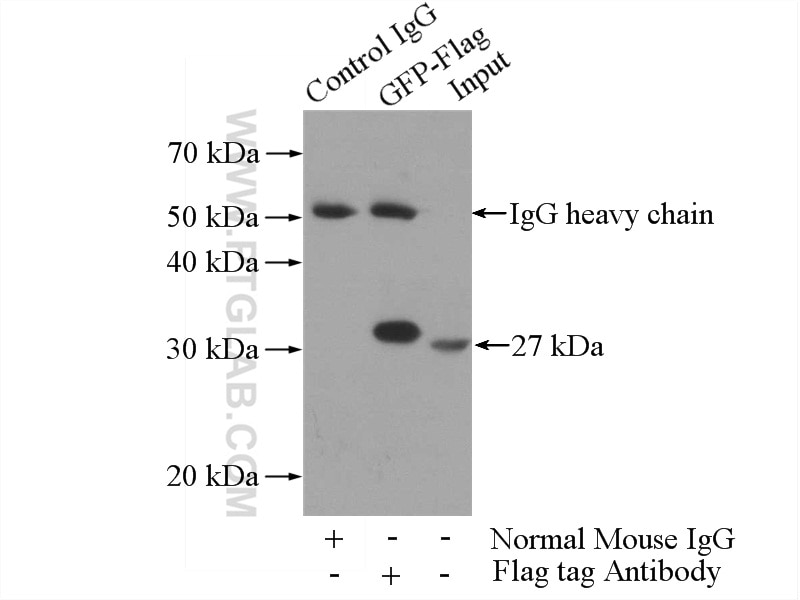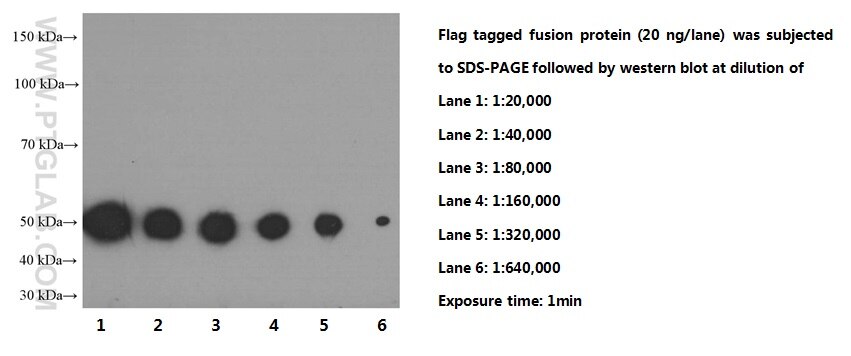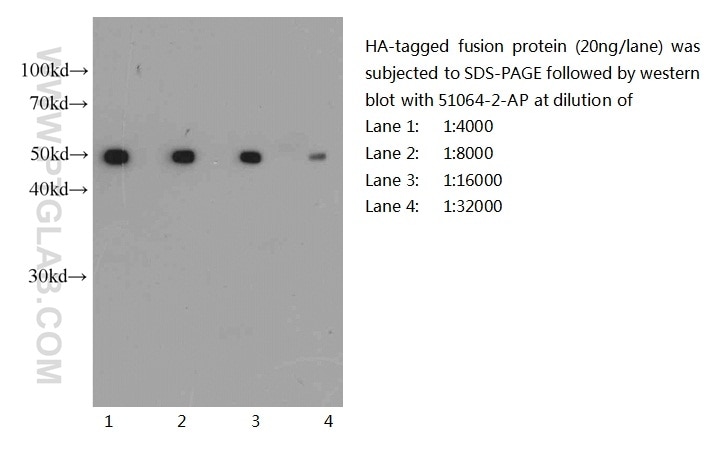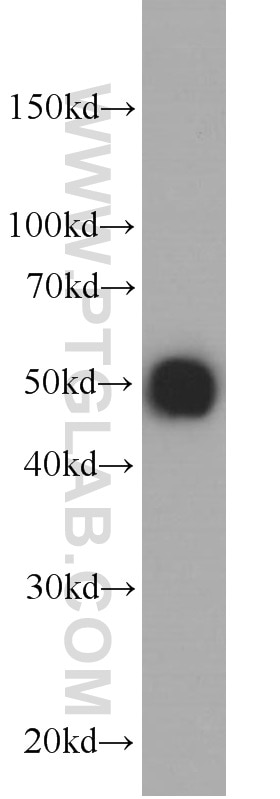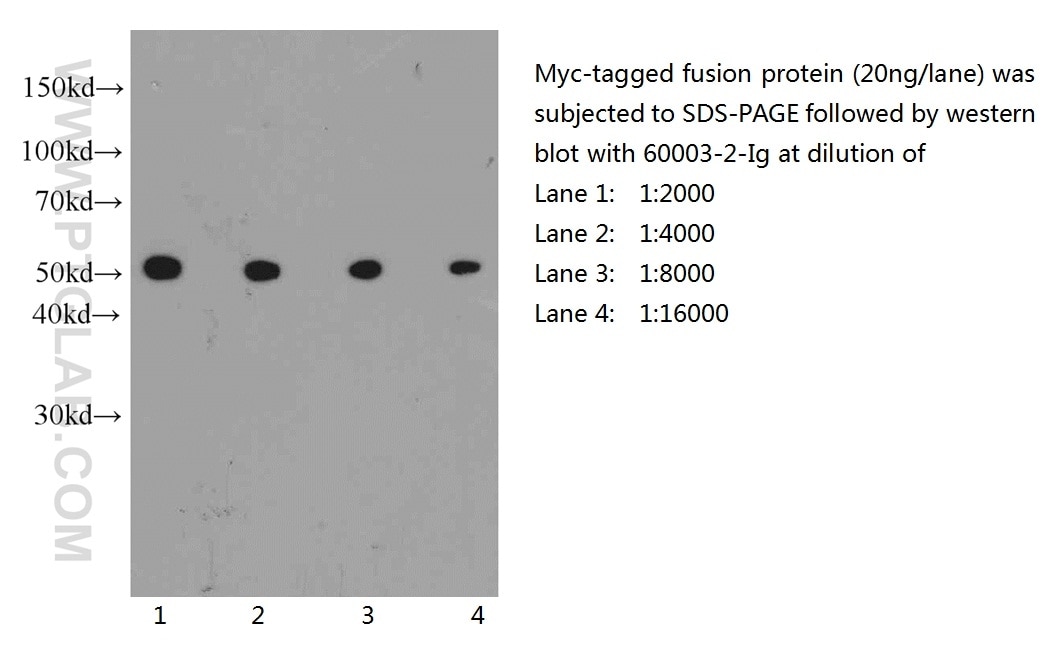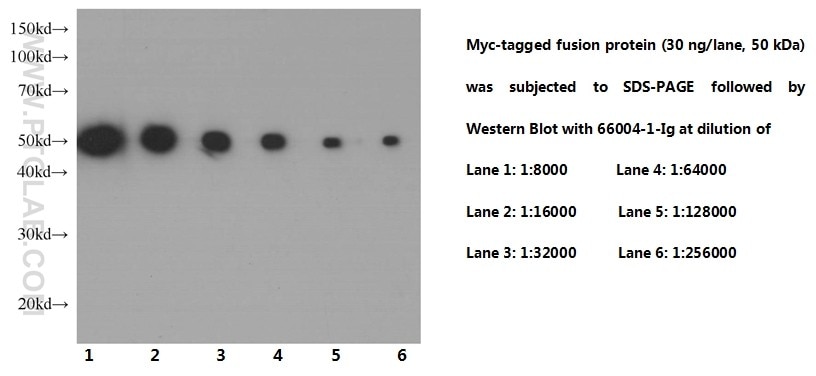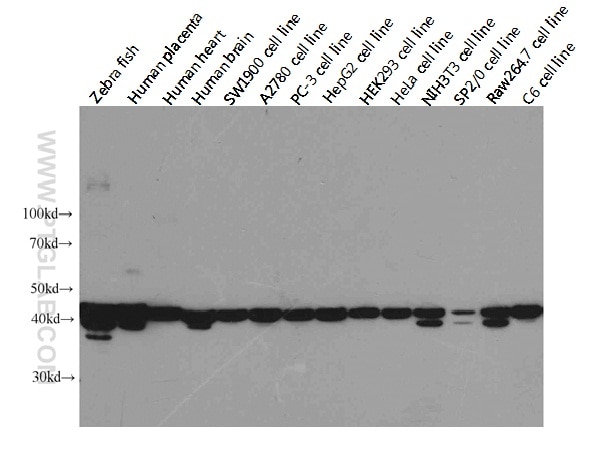Anticorps Monoclonal anti-DDDDK tag
DDDDK tag Monoclonal Antibody for IP, WB, ELISA
Hôte / Isotype
Mouse / IgG2b
Réactivité testée
Protéine recombinante
Applications
WB, IP, ELISA
Conjugaison
Non conjugué
CloneNo.
1C1D2
N° de cat : 60002-1-Ig
Synonymes
"DDDDK tag Antibodies" Comparison
View side-by-side comparison of DDDDK tag antibodies from other vendors to find the one that best suits your research needs.
Applications testées
| Résultats positifs en WB | Protéine recombinante |
| Résultats positifs en IP | protéine protéine recombinante |
Dilution recommandée
| Application | Dilution |
|---|---|
| Western Blot (WB) | WB : 1:2000-1:16000 |
| Immunoprécipitation (IP) | IP : 0.5-4.0 ug for 1.0-3.0 mg of total protein lysate |
| It is recommended that this reagent should be titrated in each testing system to obtain optimal results. | |
| Sample-dependent, check data in validation data gallery | |
Applications publiées
| WB | See 9 publications below |
| IP | See 3 publications below |
Informations sur le produit
60002-1-Ig cible DDDDK tag dans les applications de WB, IP, ELISA et montre une réactivité avec des échantillons Protéine recombinante
| Réactivité | Protéine recombinante |
| Hôte / Isotype | Mouse / IgG2b |
| Clonalité | Monoclonal |
| Type | Anticorps |
| Immunogène | Peptide |
| Nom complet | DDDDK tag |
| Symbole du gène | |
| Identification du gène (NCBI) | |
| Conjugaison | Non conjugué |
| Forme | Liquide |
| Méthode de purification | Purification par affinité contre l'antigène |
| Tampon de stockage | PBS avec azoture de sodium à 0,02 % et glycérol à 50 % pH 7,3 |
| Conditions de stockage | Stocker à -20°C. Stable pendant un an après l'expédition. L'aliquotage n'est pas nécessaire pour le stockage à -20oC Les 20ul contiennent 0,1% de BSA. |
Informations générales
Protein tags are protein or peptide sequences located either on the C- or N- terminal of the target protein, which facilitates one or several of the following characteristics: solubility, detection, purification, localization and expression. The DYKDDDDK(FLAG) peptide has been used extensively as a general tag in expression vectors. This peptide can be expressed and detected with the protein of interest as an amino-terminal or carboxy-terminal fusion. N-terminal DDDDK vectors provide an Ek cleavage site for removal of the fusion tag. The DDDDK peptide is likely to be located on the surface of a fusion protein because of its hydrophilic nature. As a result, the DDDDK peptide is more likely to be accessible to antibodies. A DDDDK-tag can be used in many different assays that require recognition by an antibody, such as western blotting, immunocytochemistry, immunoprecipitation, flow cytometry, protein purification, and in the study of protein-protein interactions, cell ultrastructure, and protein localization and so on. This antibody is a mouse monoclonal antibody raised against 3xFlag (3xDYKDDDDKT) sequence and recognizes the (3x)DYKDDDDK peptide and detects DDDDK-tagged proteins.
Protocole
| Product Specific Protocols | |
|---|---|
| IP protocol for DDDDK tag antibody 60002-1-Ig | Download protocol |
| Standard Protocols | |
|---|---|
| Click here to view our Standard Protocols |
Publications
| Species | Application | Title |
|---|---|---|
Oncogene TRIB3 confers radiotherapy resistance in esophageal squamous cell carcinoma by stabilizing TAZ. | ||
Aging (Albany NY) HOXB9 enhances the ability of lung cancer cells to penetrate the blood-brain barrier. | ||
Sci Rep TDP-43 aggregation mirrors TDP-43 knockdown, affecting the expression levels of a common set of proteins. | ||
J Virol Enterovirus D68 Protease 2Apro Targets TRAF3 to Subvert Host Innate Immune Responses. | ||
Mol Biol Rep Overexpression of APRIN inhibits differentiation and proliferation and promotes apoptosis in P19 embryonal carcinoma cells. |
